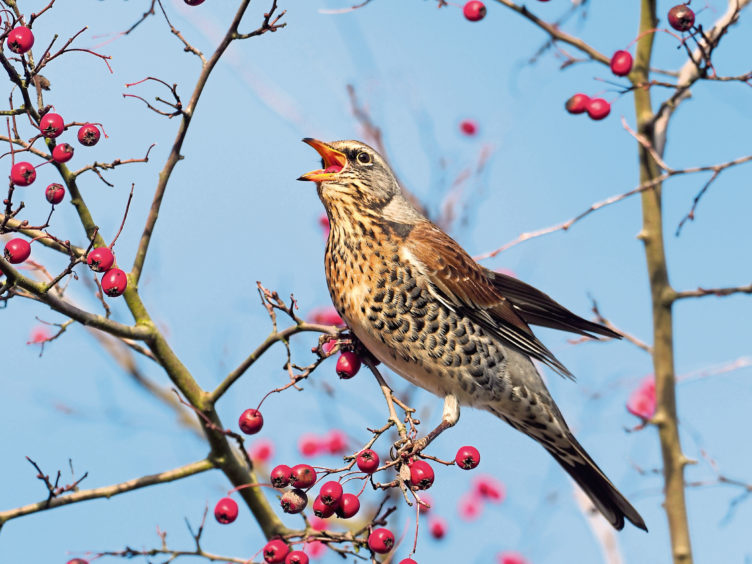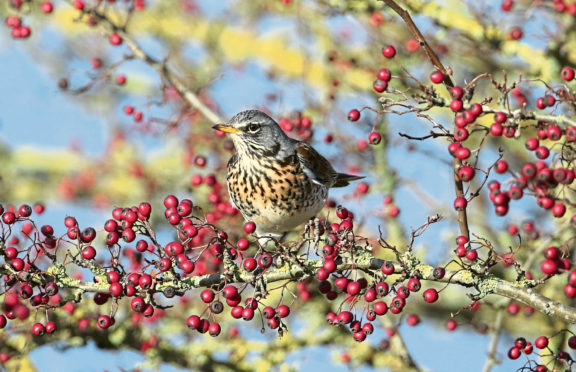As well as their berries, hawthorns are important to wildlife in other ways.
The leaves provide food for many species of moth caterpillar and the flowers in May are a magnet for pollinating insects.
An excited cackling from the crimson-berried hawthorns lining the farm track ahead of me and the grey-tinged rumps of fieldfares bound away into the distance – perpetually shy birds who are always wary of people.
I bend a full-berried hawthorn branch down towards me and admire the glistening fruits, packed with life-giving nourishment.
There are few more important trees than the hawthorn when it comes to sustaining our wildlife, especially at this time of year when hordes of our winter thrushes avidly devour their haws.
It is a race against time: fierce winter weather could descend at any time and the berries will soon be gone and the birds know this only too well.
Indeed, it can lead to a spat or two and last week I watched a fieldfare aggressively defend a hawthorn by driving away a pair of redwings that had dared to encroach upon it.
It is a battle of life and death – and to the fieldfare this little hawthorn and its berries were the most important thing in its life.
This relationship between hawthorns and birds is very much a quid pro quo one – the indigestible seeds get scattered in the birds’ droppings, thus enabling the trees to colonise new areas. But the only way to achieve this is to invest energy in producing red fleshy fruits to attract the birds.
I have also been watching a red squirrel in my garden busily burying nuts for retrieval later.
Its behaviour borders on the comical, bounding across the lawn with nut in mouth, then burying it into the grass with snout poked under the ground, before patting the soil carefully back with its little forepaws.
Red squirrels have good memories and can recall where they have buried nuts, or they can relocate them later by smell.

However, thievery is prevalent and other squirrels often plunder such stores, which is why squirrels tend to have lots of small caches, rather than putting all their eggs – or nuts – into the one basket. If an individual thinks it is being watched by another squirrel, it pretends to bury an item as a clever ruse, before burying it elsewhere later.
Red squirrels are doing well in my home area of Strathdevon, possibly because pine martens are established here and predating upon grey squirrels, which compete with reds.
The agility of red squirrels never ceases to amaze me and each morning I watch one leaping from tree to tree on its way towards our garden peanut feeder. Without the slightest hesitation it will fling itself from one branch to another in a wide-arching jump, its grip on landing always confident and tenacious.
However, overconfidence can sometimes be a bad thing and I wonder if squirrels ever fluff their jumps and injure or even kill themselves. Such is their surety up in the high branches, I imagine such accidents are unusual.










